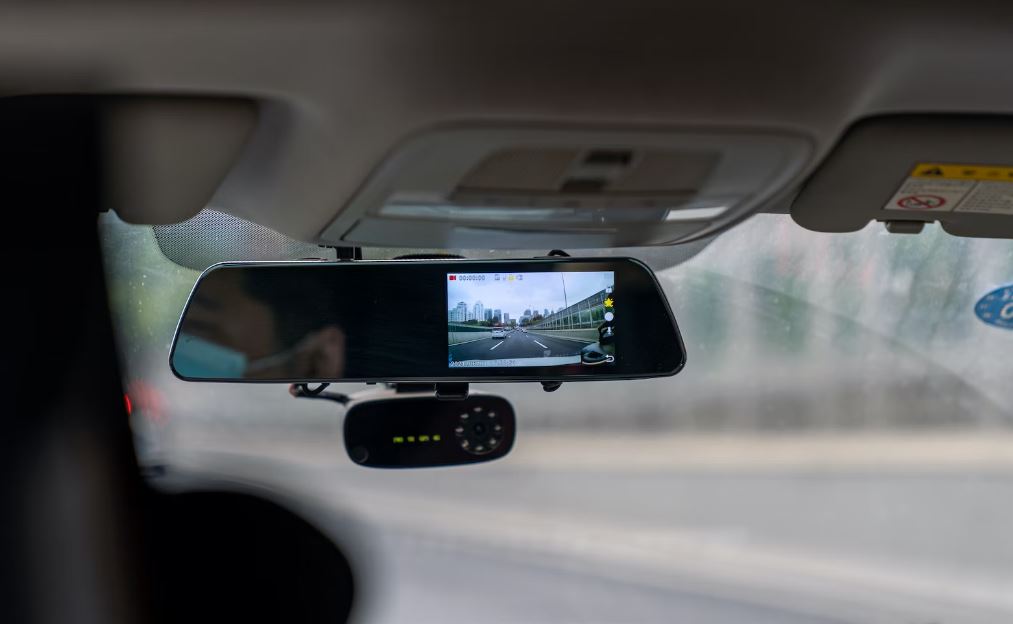Dashcams have become an increasingly popular technology for drivers looking to add an extra layer of security and evidence gathering to their vehicles. Now, dashcams with parking cameras are taking that functionality even further.
In this article, let’s explore how dashcams with parking cameras work.
- The Evolution of Parking Cameras
- Technical Breakdown of a Dashcam With Parking Camera
- The Mechanics Behind Parking Mode
- Integration of Sensors and Advanced Features
- The Interface and Playback Mechanisms
- Choosing the Right Memory Storage
- Installation and Maintenance Best Practices
- Legal and Ethical Implications of Parking Cameras
- Final Thoughts
- Frequently Asked Questions
The Evolution of Parking Cameras
Not too long ago, backup cameras were considered a luxury add-on. The push for backup cameras started with a law passed by Congress in 2008. This law required a full review of backup cameras. After the review, a ruling was proposed in 2010. It required rear-view cameras in all cars by May 2018.
This included light-duty trucks weighing less than 10,000 pounds. Having the law and ruling led to more backup cameras being adopted. This helped increase safety for drivers. The below bar chart shows the amount of money automakers spent to install this in vehicles. According to the chart, the automakers spent a total of between $546 million and $924 million which they passed right on to customers.
But now, they’ve become standard equipment in many new cars. Over 50% of new vehicles in the US came equipped with backup cameras in 2018, according to statistics from the National Highway Traffic Safety Administration.
This shift shows how cameras are being seamlessly integrated into cars for added safety and visibility. Dashcams build on this, taking the camera from just a backup function to an always-on sentinel. Parking cameras specifically enhance dashcam capabilities for times when you’ve stepped away from your car. Let’s look at how they work.
Technical Breakdown of a Dashcam With Parking Camera
A dashcam has a few main parts. It has a high-resolution camera. This camera can record video in HD, full HD, or 4K. It has a small but powerful central processor. This processor manages the dashcam features. It also encodes the videos. Dashcams store videos on microSD cards.
These cards range from 16GB to 256 GB. Many dashcams also have extra components. These include motion sensors to aid parking modes. They have GPS modules to track speed and location. They also have accelerometers or G-sensors. These detect impacts and collisions.
The processor uses data from the sensors. This gives the dashcam added functions. It also lets it capture more metadata with the videos. Carefully integrating good parts makes dashcams robust. They fit on a windshield to constantly protect the vehicle.
When running, a dashcam continuously records and overwrites old footage in a loop. But a dashcam with parking mode adds extra functionality when the car is off. The wide-angle lenses give a comprehensive view without distortion. Advanced sensors allow parking modes to activate based on detected motion or impacts.
The Mechanics Behind Parking Mode
Parking mode allows dashcams to monitor your vehicle when it’s off. It can be triggered by:
-
Motion sensors detecting activity nearby
-
G-sensors feeling an impact
-
Voltage drops when the car battery switches off
-
Manually pre-activating it
The device then draws minimal power from a reserve battery to capture footage. This allows it to record security breaches, hit-and-runs, and more. Advanced parking modes can take continuous footage or snap still images at intervals to conserve storage space. The onboard processor oversees capturing and saving video when needed.
Integration of Sensors and Advanced Features
Alongside cameras, dashcams leverage sensors to identify incidents and triggers.
-
G-sensors detect collisions and sudden impacts. They measure the force (G’s) from 2G to 8G based on sensitivity grade.
-
Motion sensors spot movement in the camera’s field of view and activate recording.
-
GPS tracks your vehicle’s exact location and speed, logging critical data.
Parking cameras integrate sensors like GPS and G-sensors to capture incidents. High-end dash cams also boast extras like:
-
WiFi for connectivity
-
Cloud storage capabilities
-
Touch screens
-
Improved night vision
The Interface and Playback Mechanisms
Most dashcams include:
-
An onboard LCD screen to view or configure settings
-
MicroSD slot for memory cards
-
Mini USB port for data transfer
Playback happens directly on the device screen. But many now also have companion smartphone apps for quick remote viewing. By 2021, over 60% of high-end dashcams could connect to smartphone apps. This is based on research done in the industry. The time and GPS data on the recordings are very important. This information can help with insurance claims or police reports after accidents happen.
Choosing the Right Memory Storage
Dashcams generate tremendous data. A 1-hour 4K recording can require up to 128 GB of storage. Factors to consider when selecting an SD card:
-
Capacity: Bigger is better. Get the largest reasonably priced card available.
-
Speed rating: Look for Class 10 or U1/U3 ratings to support HD recording.
-
Brand reputation: Stick with reliable manufacturers like SanDisk or Samsung.
High-capacity, high-speed microSD cards help ensure smooth loop recording. You may also consider cloud storage options to supplement your dashcam’s local storage.
Installation and Maintenance Best Practices
Proper installation optimizes coverage and functionality.
-
Location: Mount centrally on the windshield, ideally behind the rearview mirror to avoid obstruction. This gives the cam a clear 160°+ view with maximum coverage of the road ahead and the interior.
-
Angle: Tilt the device slightly downwards between 5-10 degrees to adequately capture both the hood and horizon in-frame without sky glare. Setting the right angle takes some trial and error.
-
Cabling: Tuck away the wiring neatly by running it into the headliner and along the edges of the windshield using trim tools. Use cable clips to secure against slack. Hide any dangling wires behind panels or under mats.
-
Orientation: Position the cam squarely horizontally to the ground and double-check the picture orientation settings. A crooked cam can lead to a skewed view.
-
Height: Mount at a height accessible for operation and storage card swaps. But keep it high enough to avoid blocking the driver’s line of sight.
-
Cleaning: Wipe the windshield thoroughly during installation to optimize optical clarity and mount adhesion.
Taking the time to install your dash cam properly ensures it stays firmly affixed while capturing optimal, glare-free footage.
Over time, maintain your cam by:
-
Keeping the lens clean: Use a microfiber cloth and glass cleaner to wipe the lens free of dust, dirt, and fingerprints regularly. Avoid using abrasive materials.
-
Updating firmware: Check the manufacturer’s website for the latest firmware updates and install them to enjoy improvements, bug fixes, and expanded capabilities.
-
Checking on the memory card health: Periodically reformat your SD card to clear out corrupted data and maintain optimal performance. Replace cards after 1-2 years of heavy use.
-
Adjusting settings: As lighting conditions change with seasons, tweak settings like resolution and exposure accordingly to maintain image quality.
-
Testing parking mode: Trigger parking mode manually and review recordings monthly to confirm it’s working properly.
-
Recalibrating: If the device becomes frequently triggered by minor bumps, recalibrate the G-sensor as per the user manual.
Following the manufacturer’s guidelines for installation and making time for periodic maintenance ensures your device works reliably for many years to come.
Legal and Ethical Implications of Parking Cameras
Dashcams used in public places raise worries about privacy. Because of this, some states have made laws about using dashcams. By 2020, 15 states had rules for using dashcams. This is according to the National Conference of State Legislatures. It is legal to record video in public. However, it may break wiretapping laws to post videos with identifiable people online without consent. Or to record audio of people without them knowing.
Dashcam owners should understand regulations and exercise caution when sharing recordings. Overall, parking cameras offer invaluable protection and evidence gathering if used responsibly.
Final Thoughts
As dashcams with parking modes become more advanced, they’ve moved from novelty to necessity for many drivers. Their seamless set-it-and-forget-it operation provides peace of mind your vehicle is protected at all times against collisions, theft, and vandalism.
Just take care to install your device properly, choose adequate storage, and maintain it diligently. And of course, make sure to abide by relevant laws in your state. With those simple steps, you can benefit from an auto sentry that never sleeps!
Frequently Asked Questions
1. How long can a dashcam record in parking mode?
Runtime depends on the power source and SD card capacity. For example, a 128GB card capturing HD footage could hold up to 9 hours of video. Optimize by adding a low voltage cutoff feature to prevent complete battery drain.
2. Can hackers access my footage remotely?
Unlikely. Most dashcams today boast encrypted connections. Use unique passwords and don’t connect to public WiFi. Also, avoid models that rely on apps with security concerns.
3. Do I have to notify people I’m recording them?
Laws vary. In public, signs or verbal notifications aren’t required. But obtain consent before audio recording private conversations. And never post footage without permission. When in doubt, consult state regulations.


